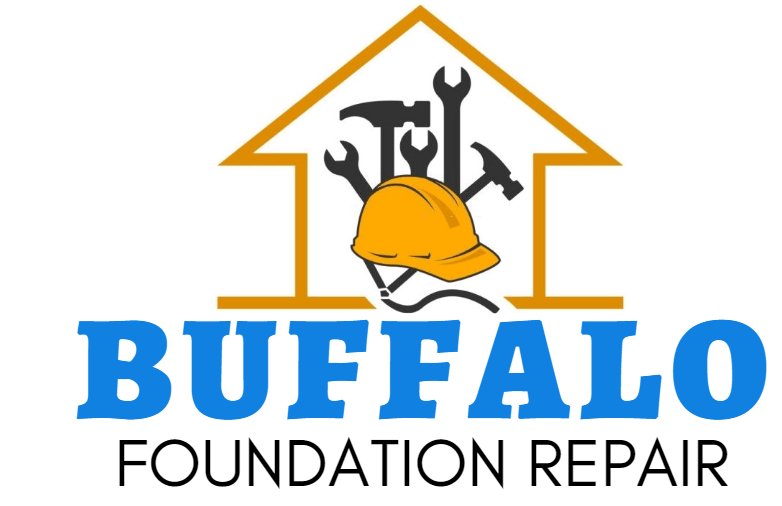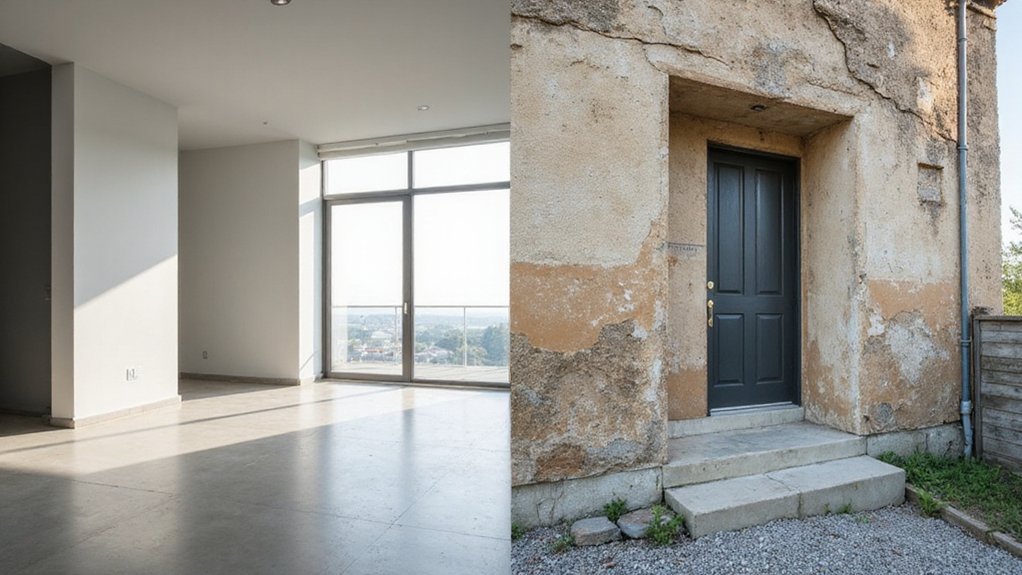When it comes to waterproofing your home, you’ve got two main options: interior and exterior. Both have their pros and cons, so the choice isn’t always obvious. Do you prioritize upfront cost or long-term protection? Accessibility or durability? Evaluating these factors carefully is key to selecting the waterproofing system that best suits your needs and budget. Uncover the intricacies of each approach and how they can impact your home’s moisture management – the decision you make could make all the difference.
Cost Considerations
When considering interior versus exterior waterproofing, the initial cost is often a top concern. Your budget allocation is essential, so it’s wise to do a thorough cost-benefit analysis. While exterior waterproofing may have a higher upfront price tag, it often pays off in the long run by better protecting your home’s foundation repair and preventing costly water damage. Interior waterproofing, on the other hand, can be more budget-friendly but may not offer the same level of extensive protection. Eventually, weigh the pros and cons carefully to determine the most economical solution for your unique needs and financial situation.
Accessibility and Disruption
While exterior waterproofing may be more accessible for inspections and maintenance, it can also impact your home’s exterior and landscaping. Exterior waterproofing may require excavation, which can interrupt your yard and landscaping, creating space constraints and a longer construction timeline. Interior waterproofing, on the other hand, typically has a smaller footprint and is less intrusive to your home’s exterior, potentially causing less disruption to your daily life. However, interior waterproofing may be more challenging to access for future inspections and maintenance, necessitating careful planning and consideration. Moisture in soils and drainage problems can also impact the effectiveness of exterior waterproofing.
Moisture Management Effectiveness
Both interior and exterior waterproofing methods can provide effective moisture management, though their relative effectiveness may vary depending on your specific needs and circumstances.
Interior systems focus on vapor barrier performance, creating a strong seal to prevent moisture intrusion. Exterior approaches emphasize condensation control strategies, managing water flow and drainage around your home’s foundation.
Evaluating factors like your local climate, soil conditions, and construction type will help determine the most suitable waterproofing solution for your property. Carefully considering moisture management effectiveness can guarantee long-term protection and minimize the risk of water damage or mold growth within your living spaces.
Installation Complexity
The complexity of installation can be a critical factor in choosing between interior and exterior waterproofing methods. Consider the following:
– Interior waterproofing often requires specialized equipment and training, which can make the process more time-consuming and intrusive to your home’s construction timeline.
On the other hand, exterior waterproofing may be simpler to install, as it can be done from the outside without having to impede your living space. However, exterior waterproofing may require more extensive excavation and landscaping work, which can also impact your construction timeline.
Long-Term Durability
When considering long-term durability, you’ll find that interior waterproofing generally offers greater longevity than exterior methods. The materials used for interior waterproofing are designed to withstand the harsh conditions within your home, resulting in impressive material longevity.
Additionally, interior waterproofing requires less frequent maintenance compared to exterior systems, which can be susceptible to weathering and damage over time. This means you’ll spend less time and money on upkeep, allowing you to enjoy a more reliable and durable waterproofing solution for the long haul.
With interior waterproofing, you can have peace of mind knowing your home is well-protected.
Environmental Impact
Thoughtful consideration of the environmental impact is essential when evaluating waterproofing options.
Exterior waterproofing can help prevent soil erosion by controlling water runoff, protecting the surrounding terrain.
Interior waterproofing, on the other hand, often employs materials and methods that are more environmentally friendly, conserving water and reducing waste.
Conclusively, the environmental impact of your waterproofing choice depends on the specific techniques and materials used, as well as the overall construction and maintenance practices. Careful planning and research can help you make the most sustainable decision.
Resale Value Implications
Your choice of waterproofing can impact the resale value of your home. Exterior waterproofing can increase space utilization by allowing finished basements and extra living areas. This enhances resale appeal, as homebuyers value functional living space.
In contrast, interior waterproofing may be perceived as a sign of ongoing moisture issues, potentially deterring buyers and lowering your home’s perceived value. Consider the long-term implications when deciding between interior and exterior waterproofing. Prioritizing resale value can help you make the best choice for your home and financial future.
Frequently Asked Questions
What Is the Best Time of Year to Waterproof My Home?
The fall season and rainy months are the best time to waterproof your home. You’ll stay dry and secure, ensuring your property’s long-term protection during the wettest time of year.
Can I Waterproof My Home Myself or Do I Need a Professional?
You can DIY waterproofing if you’ve got the skills, but it’s risky. Hiring a pro costs more upfront, yet they’ll guarantee it’s done right and protect you from future issues. Consider your comfort level and potential cost savings when deciding.
How Often Should I Inspect My Home’s Waterproofing System?
Your home’s waterproofing system should be inspected regularly, at least once a year. Perform visual inspections to check for cracks, leaks, or any signs of damage. Proper maintenance guarantees your home’s protection.
Does Waterproofing Affect the Color or Appearance of My Home?
Waterproofing can affect your home’s exterior appearance, impacting its visual aesthetics. Proper application and materials selection are key to maintaining your desired look while protecting your home. Discuss options with your contractor to find the right waterproofing solution.
Will Waterproofing Increase the Value of My Home When Selling?
Waterproofing can increase your home’s resale value and improve its marketability, making it more attractive to potential buyers seeking a well-maintained, dry, and desirable living space that meets their need for belonging.


Recent Comments